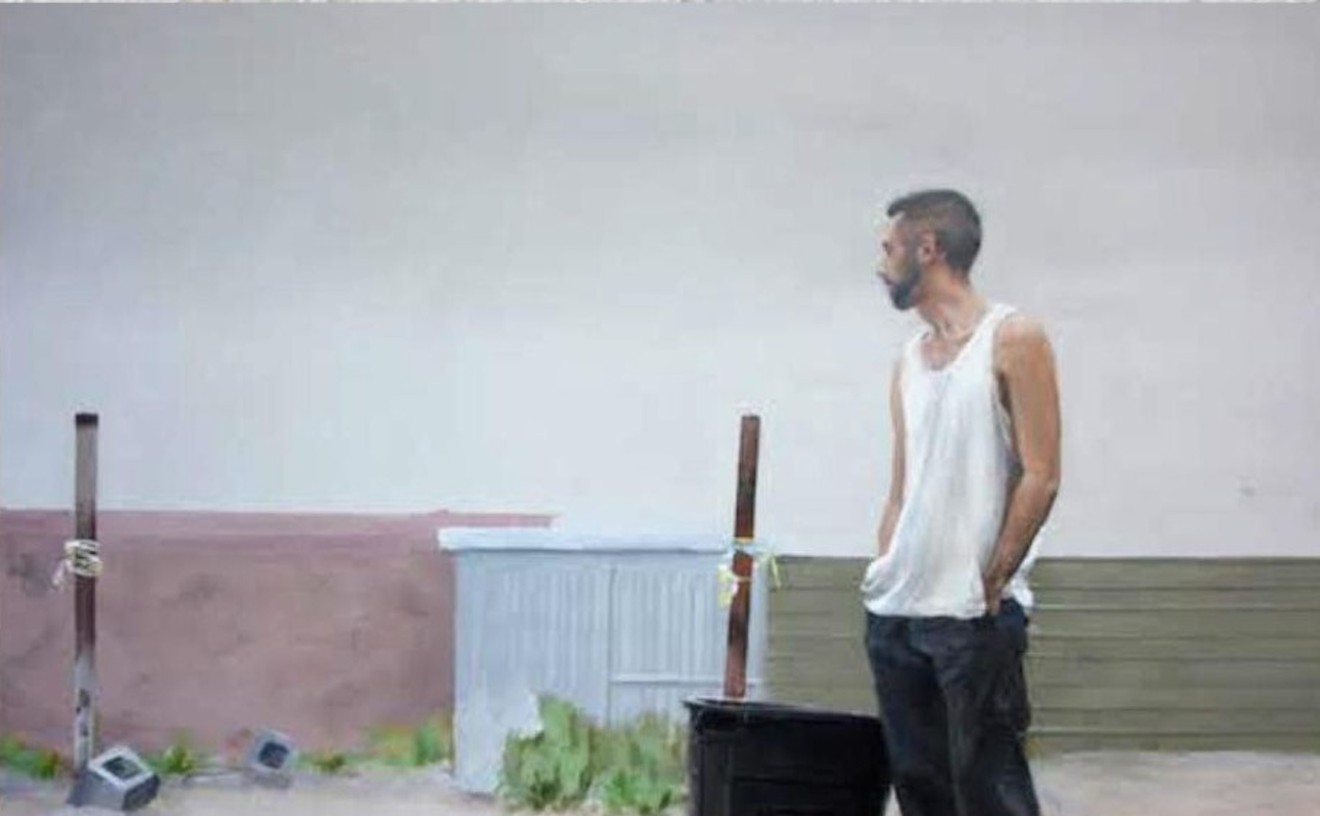From political and factual to emotional and intellectual, Tributaries highlights four local artists's creative interpretation of the most basic and necessary resource: water.
The exhibition, currently on view at Shemer Art Center in Phoenix, features the work of four local artists including Saskia Jorda, Melissa Martinez, Emily Stergar and Nic Wiesinger, who each present a contemporary art piece that communicates concepts and perceptions that surround the vital yet often under-appreciated resource.
William LeGoullon, a local photographer and curator of the show, unites these streams of thought in the Shemer Art Center to explore the theories and realities of water in present day culture.
Wiesinger's "12 Year Drought: Fluctuations in Landscape Over Time" displays the ambiguity of Roosevelt Dam's actual water line with colored tape, each indicating a different estimate.
Wiesinger's used topographical mapping in his artwork before, and with the tape, he provides a visual for the place's confused identity and our inability to consistently survey the landscape, water level and constant environmental changes.
"Landscape is impermanent," Wiesinger writes in his statement for the piece. "Looking for an exact replication of natural boundaries, especially those that deal with water in the West, is a contentious and at times futile task."
Jorda's playful "Reservoir" layers stacks of industrial felt in a form reminiscent of Arizona canyon with different shades of blue yarn that stream down and rise up as a collective body of water.
Here, she metaphorically ties water and knowledge -- both exist as flowing or stagnant. Jorda's known for creating suspended installations, and she says her greatest challenge with this piece was the amount of space within the gallery.
Stergar's "Bank" brings attention to interstate water agreements between California, Arizona and Nevada and conflicts with the introduction of the Central Arizona Project. Three pyramid forms rest on the ground and represent each of the states according to how much water each receives (Nevada's the smallest, Arizona's in the middle, California's the largest). Since the 90s and early 2000s, the states have stored their unused water in each of the other states, creating a water banking system.
"I was thinking about both agreements -- the CRC (California River Compact in 1922) and the storage compact. Each individual piece represents one of the lower basin states," Stergar said of her piece. "Two lean towards Arizona, as if the water would flow in that direction. The carving is of the Colorado River, and the placement refers to the point where all three states meet."
Martinez says her creations are guided by "natural materials, movements and phenomena that are often overlooked."
In "Lament and Acquiesce," light reflects off of suspended bottles as water gradually drops into mason jars below. Every drip gives its own distinct pitch, depending on the size and fullness of the jar it falls into, showing the effective simplicity and preciousness of water.
Tributaries will continue to be on display until July 31 at the Shemer Art Center, located at 5005 East Camelback Road at the corner of Arcardia Drive in Phoenix.










